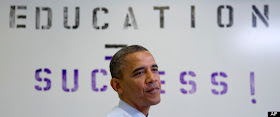Almost all of us are familiar with the Disney princesses and their tales. Cinderella the poor girl with an evil stepmother and stepsisters who gets her wish to go to the ball and meet her prince charming, Ariel the mermaid who just wants to abandon her life as a mermaid and live happily ever after with her prince...just to name a few. One of the things that I noticed when thinking about the princesses is how racially undiverse they are. The majority of them are white while Jasmine, Mulan, Pocahontas, and much more recently, Tiana are the ones that are of different ethnicities. I must clear up the fact that many of these princesses were not created by Americans (or in that case Disney as well) but were adapted from fairy tales by Grimms or Hans Christian Anderson, or others too. The last princesses that were added to the "Disney Clan" were the ones mentioned before, the non-white ones. The first one added was Jasmine in 1992 while the first princess, Snow White was shown in feature film in 1937. After the release of Snow White, four more were to follow before a different ethnicity was added. Why did it take so long to add princesses of different ethnicities? Right now, there is a pretty solid ratio of white to non white princesses but this makes me wonder if Disney would have thought something like this would happen back in 1932.
More recently though, I was reading an article that described Disney's plan to release a new princess named Sofia. She will be the first Latina princess and she will be featured in a movie called, "Sofia the First: Once Upon a Time", and have a spin off television show on the Disney Channel and Disney Junior. The major contreversy stems from the fact that critics do not think she is being portrayed as "Latina enough" to really embrace the ethnicity. One of their main concerns is that her mother's complexion is much darker than Sofia's. Unlike Sofia, the mother appears to look more Latina than her. How come the princess is not this color? It took Disney long enough to come out with princesses of different ethnicities but they eventually took the ethnicity to the extreme. They tried to incorporate cultural situations and educate young girls with Jasmine, Mulan, Pocahantas, and Tiana. How come they are not going all the way with embodying the culture of the Latinos?
I think that it could be linked to the current American views towards Latinos. Many Americans are uneducated about different types of people and are quick to make assumptions and judgements. The other racially diverse princesses were not introduced when there was a direct discrimination towards that ethnicity. Sofia, on the other hand, is trying to be a representative for the growing number of latinos in the country. All in all, I feel that Disney is trying to do good by introducing a Latina princess but I am disappointed in how poorly they are portraying the different ethnicity. What do you think this shows about American attitudes toward equality and inclusion?





.jpg)